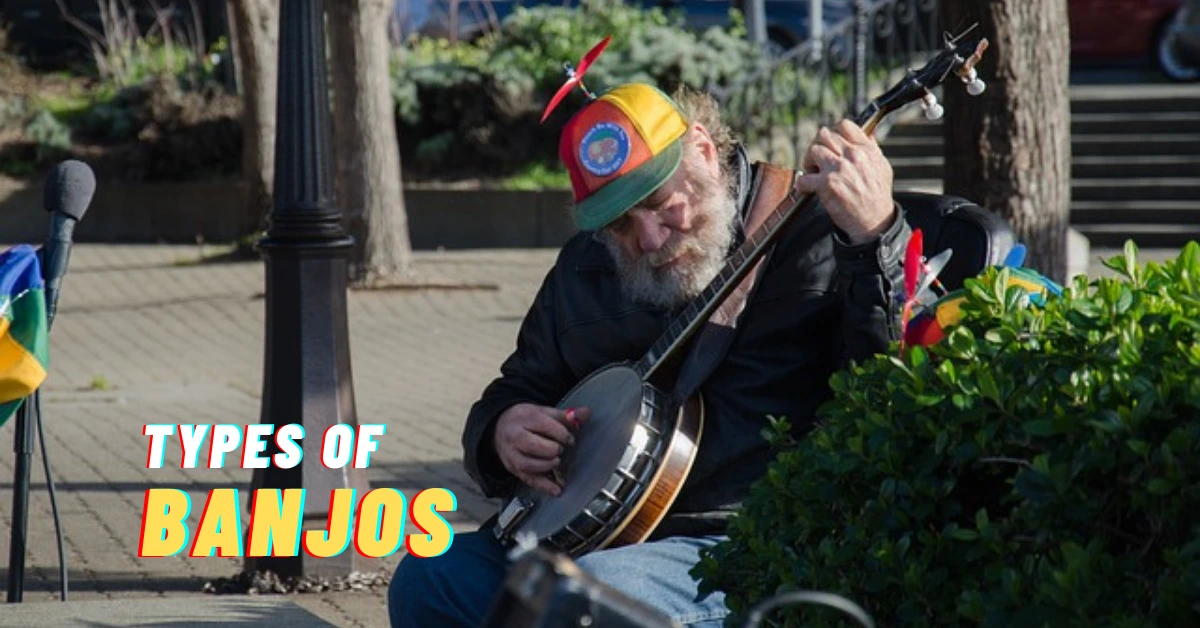Shopping for a banjo might be confusing if you don’t know what to look for or how to tell one model from another. Banjos can be fashioned from many different resources and take on many forms.
Banjos come in a wide variety of styles. Choosing the correct banjo for your playing style is crucial whether you want to get started or improve your skills. What model of the banjo is the best for you?
In this article, we’ll introduce you to 11 different types of banjos, each with unique features and characteristics.
Read on to find out!
What Is a Banjo?
The banjo is a stringed instrument distinguished by its typically rounded body and long, thin neck.
The standard number of strings for a banjo is 4 or 5. The standard banjo has strings and is ideal for performing bluegrass and other forms of folk music. However, there are variants of the banjo with 6 or 12 strings.
Banjos are typically constructed with a steel frame that is covered with a plastic head or a taut skin. However, certain older banjo models were occasionally constructed with a wooden frame.
Due to its unique tone, visual appeal, and playing techniques, it eventually surpassed all other instruments as America’s leading country and folk instrument. Banjo players worldwide also play the instrument for its one-of-a-kind look and sound.
Type of Banjos
Banjos, like other string instruments, can be found in a wide range of variations. The 11 types include:
- 4 String Banjos
- 5 String Banjos
- 6 String Banjos
- 12 String Banjos
- Tenor Banjos
- Resonator Banjo
- Plectrum Banjo
- Open Back Banjo
- Parlor Banjo
- Hybrid Banjo
- Electric Banjo
Let’s go through all of them one at a time.
1. 4 String Banjos
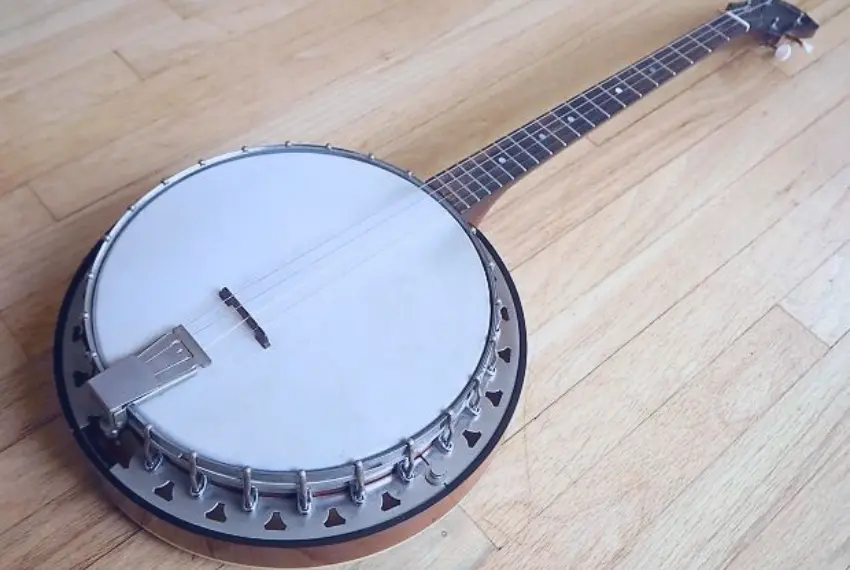
In terms of versatility, a 4-string banjo is the banjo of choice for the most upbeat music. If you’ve never seen or played the ukulele, a 4-string will look and sound very familiar. Either two tenors, tuned like a mandolin and viola, or an Irish tenor, are used for tuning. On the other hand, the volume and pitch are controlled by an octave.
The four-string banjo is perfect for those who wish to play foot-stomping, hand-clapping tunes. It has the greatest range of any banjo. This banjo was formerly the go-to for Classical, Bluegrass, and Irish and Traditional Dixieland Jazz.
2. 5 String Banjos
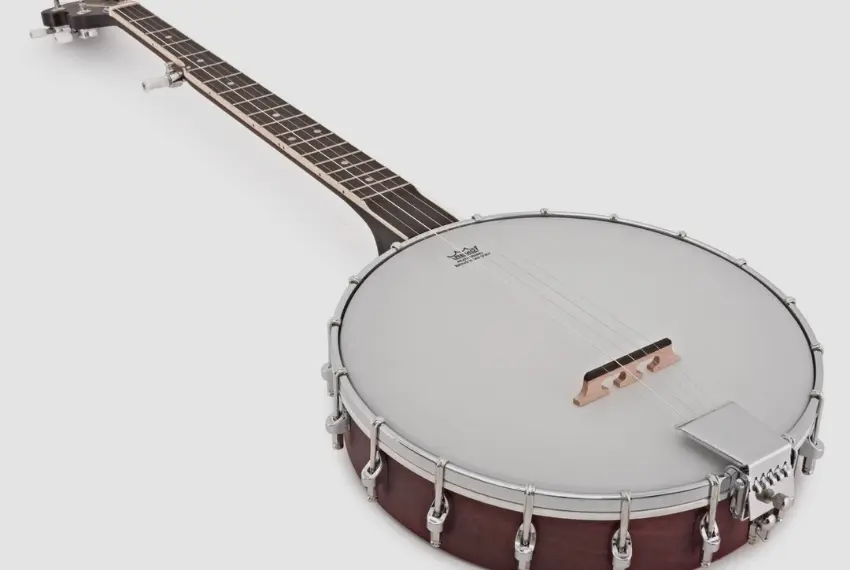
A five-string is the most common and ideal choice for beginners. As its name implies, a 5-String Banjo is equipped with five strings. There are no frets; thus, much like with a four-string banjo, you can’t use it to play chords. The fifth string, while the shortest, is joined to a tuning peg that protrudes from the neck so that the instrument can be tuned to a G chord.
These banjos are common in traditional music traditions including bluegrass and picking. Picks, the clawhammer approach, and the quick 3-finger picking style are just a few of the many methods used by 5-string banjos. Its low volume is due to its lack of a resonator or tone ring, like with the four-string banjo, and its head and neck. Since its gentle sound is often employed in Celtic music types like folk and bluegrass. However, you can hear it in many different styles nowadays.
3. 6 String Banjos
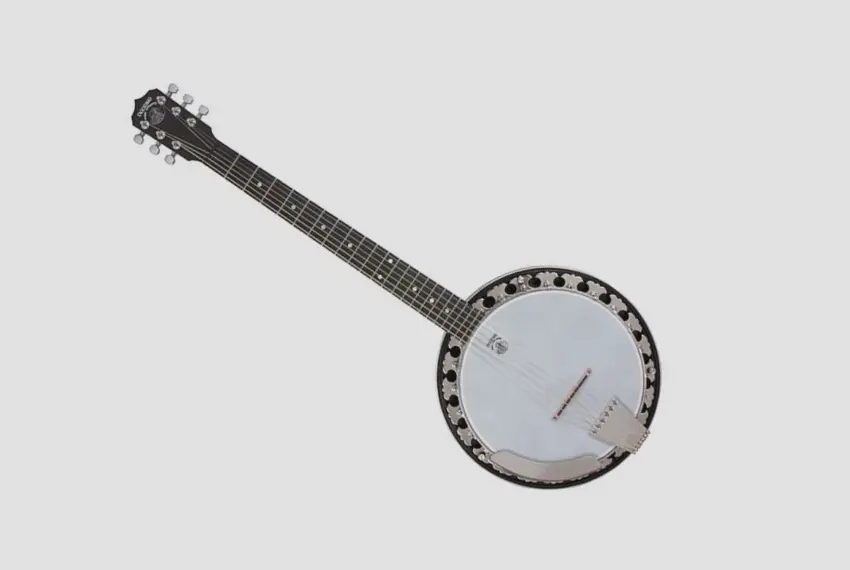
Six-string instruments have been available for quite some time. The 6-string banjo, one of the earliest models, is still one of the most popular and common forms of banjo. The 6-string is enjoyable to play, and high-quality variants are available for those seeking robust tones from pickups akin to those found on electric guitars.
The six-string banjo is a type of guitar with an extended neck and additional frets, similar to other six-string instruments like bass guitars and basses.
Some six-string models feature resonators to enhance their bluegrass performance, while others have regular open backs. Some six-strings are equipped with pickups, like electric guitars, for people who like a louder sound. Like its smaller relatives, this instrument is featured prominently in a wide range of folk music traditions worldwide, especially Celtic forms.
4. 12 String Banjos
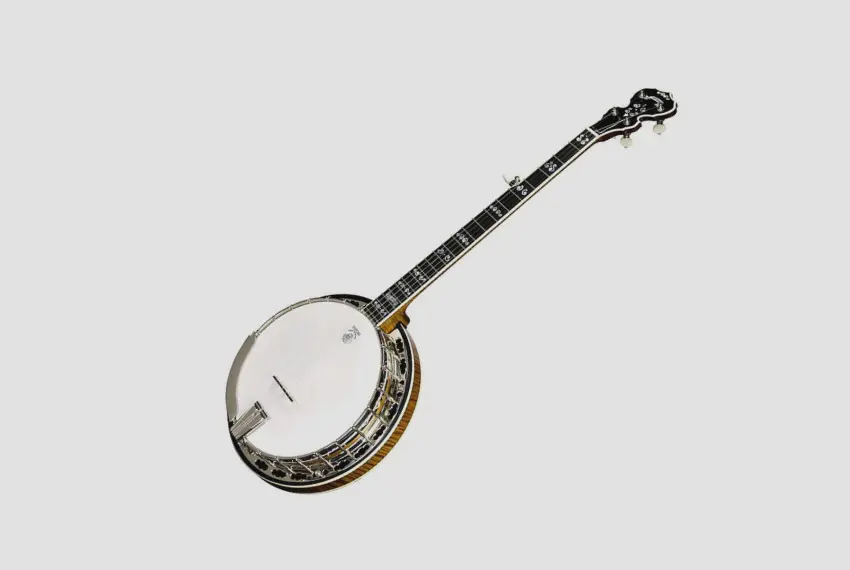
The 12-string banjo is truly one-of-a-kind; it’s tuned and played like a guitar, but its delicate and lacy jangle tones are unlike anything else. The 12-string banjo is a fantastic choice for anyone looking to add a new dimension to their music and is often considered by novice musicians to be a more accessible musical instrument than the guitar.
This style is frequently used in Celtic music and is often accompanied by the harp or the violin. Like a twelve-string guitar, the banjo is often tuned to DGDGBD, but various tunings, such as CGDAE, are possible for those wanting to try something new.
Though it’s a decent instrument, it could be better for a beginner. The 12-string was created for players with experience with other stringed instruments, such as guitar or ukulele. There aren’t many people who can teach you how to play the instrument, and even fewer resources are available to you.
5. Tenor Banjos
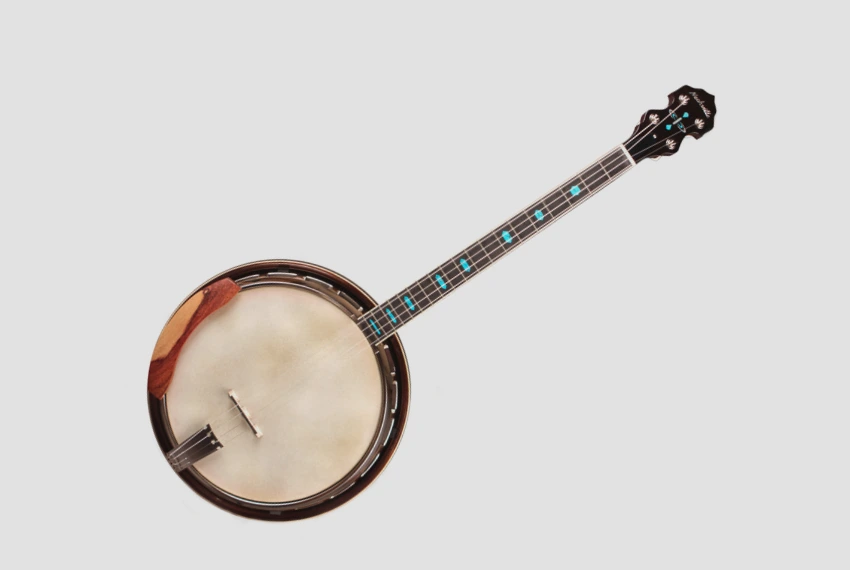
Since there are only four strings on a tenor banjo and the scale length is shorter than that of a five-string banjo, there are only seventeen to nineteen frets. The tenor banjo is often employed in modern jazz, traditional music, and Dixieland because its strings are set to true fifths.
This variety of banjo has four strings, but its fingerboard is longer than those of four- and five-string banjos. This makes room for additional frets, making it possible to play chords. Since they aren’t commonly employed in today’s music, Irish tenor banjos are hard to come by on the market.
6. Resonator Banjo
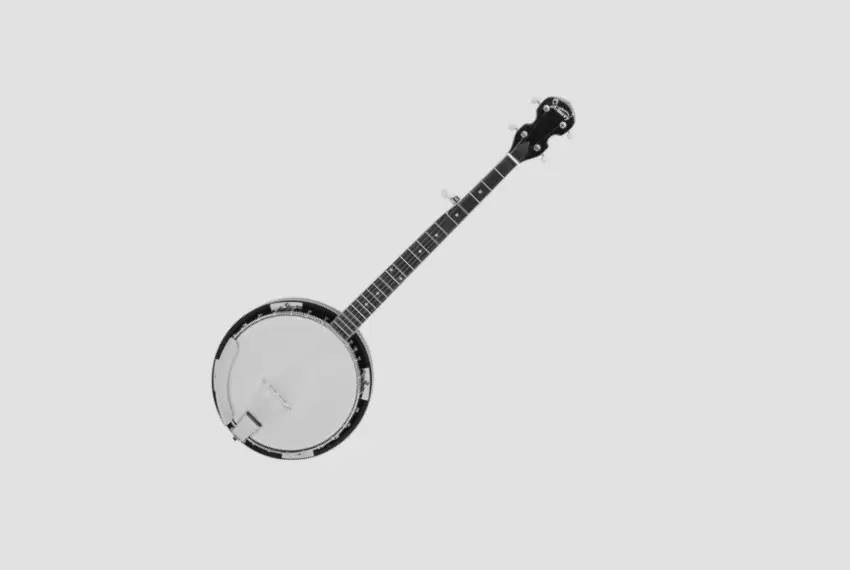
Standard banjos have 5 strings, resonators, or bluegrass banjos. With a resonator banjo, the banjo’s head is replaced by a huge metal disk known as a tone ring. Reduced background noise and maybe improved volume and sustain are two side effects. The end product is a really powerful musical tool.
The tone ring is simpler to play than standard banjos, giving it a metallic quality. The metallic sound rings of a resonator banjo make it hard to get a nice fingering sound. Hence the instrument is typically strummed with a pick.
7. Plectrum Banjo
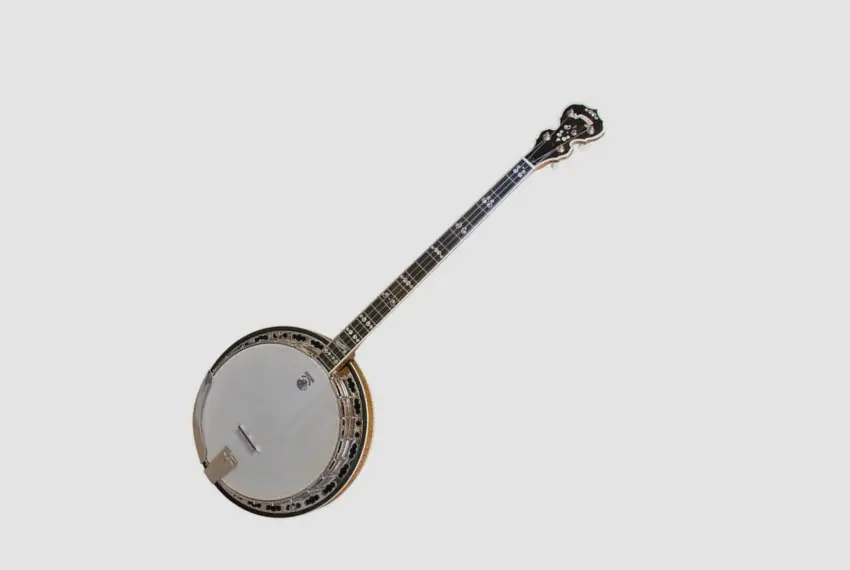
Banjos that use a plectrum or pick to play are plectrum banjos. Because of their lower pitch compared to tenor banjos, they are preferred by players who like to use chords rather than fingerpicking. Like 5-string banjos, they feature four strings and about 22 frets.
During the Jazz Era, plectrum banjos became widely used in dance ensembles. Straw-hatted banjo players typically use plectrum banjos in popular portrayals of bluegrass music.
8. Open Back Banjo
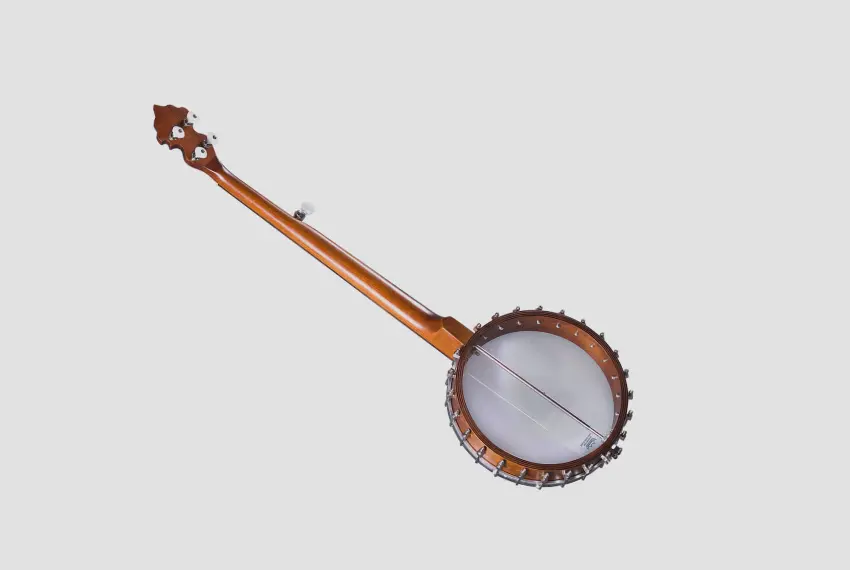
Another style with five strings is the open-back banjo. The body of an open-back banjo is open, whereas the body of a resonator banjo is closed to produce a louder sound.
The volume and brightness of this type rely on the head’s tightness and the instrument’s tuning. The banjo’s sound hole in the instrument’s back is responsible for this. The usage of an open-back guitar is widespread in modern music like country music and folk.
9. Parlor Banjo
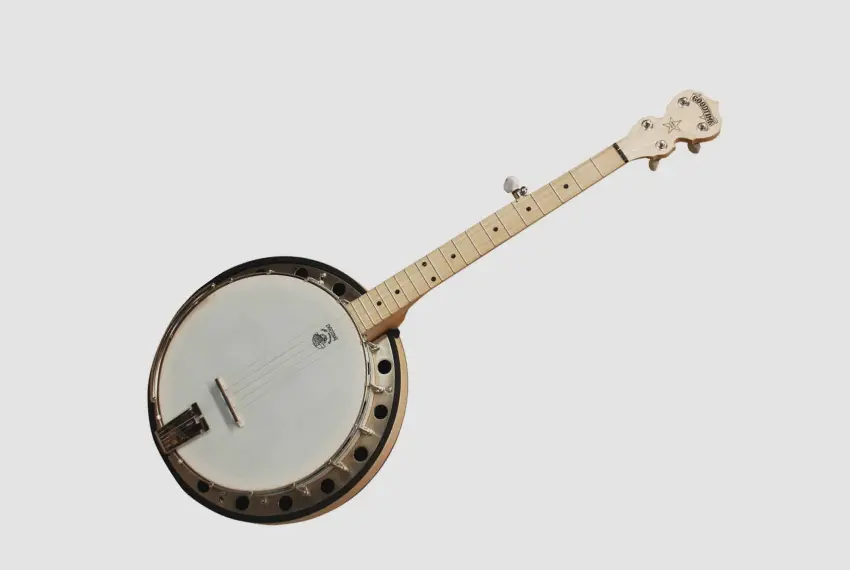
Parlor banjos, a shorter variety of 5-string banjo, share normal banjo tuning’s open G chord tuning and 19 frets. In any case, you can change the instrument’s tuning to an A if you choose. The only difference between a 22-fret banjo and a parlor banjo is that the latter has fewer frets.
When performed with banjo rolls in the style of Bluegrass and Country legend Earl Scruggs, a 5-string instrument really shines. Look for a more basic, open-back model if you want to play in the frailing or clawhammer style.
10. Hybrid Banjo
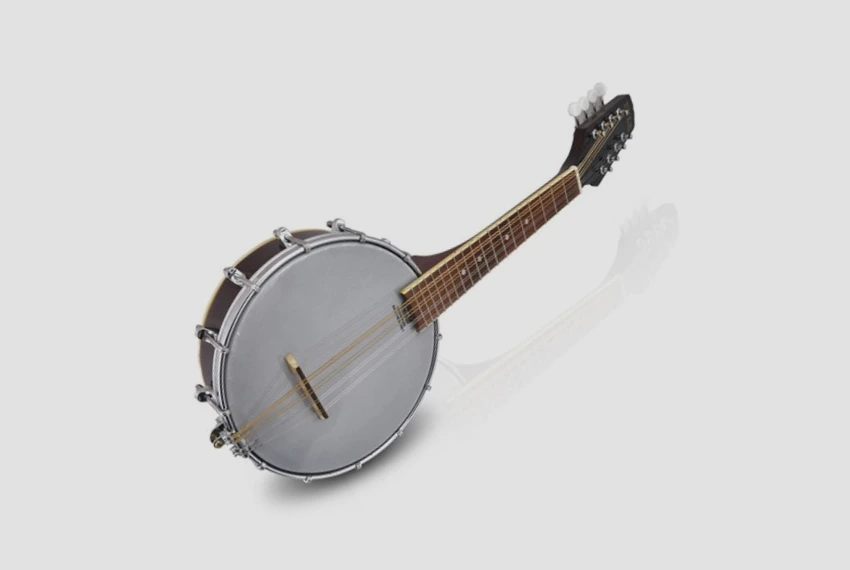
The hybrid banjo is a new kind that blends features from other banjos.
There are two resonators in a standard design, one at the top near your ear and another at the bottom near your knee. The style of play of hybrid banjo is typically the same as that of an open-back formation.
11. Electric Banjo
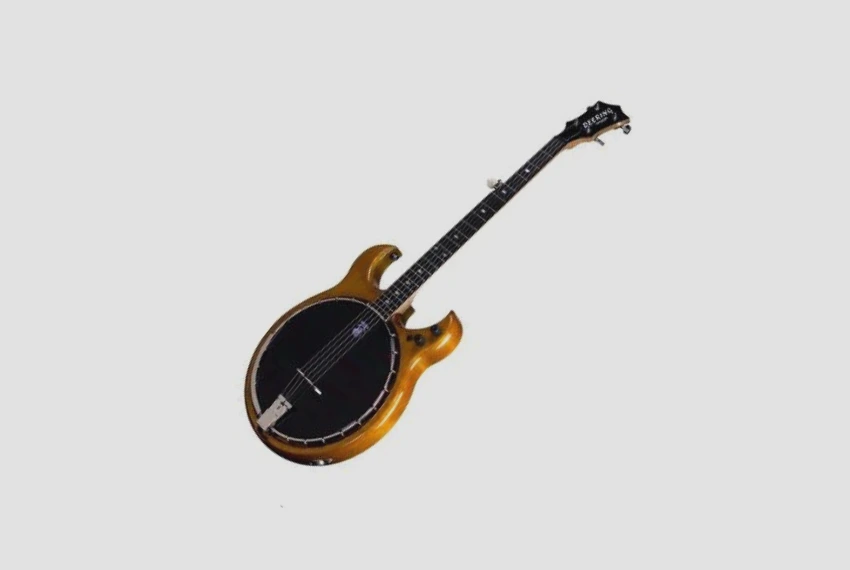
Electric banjos are similar in sound to acoustic banjos without an amplifier and are often played with a pick. Electric banjo players typically use a pick-up transducer mounted on the headstock to control the loudness of their instruments.
Resonator banjos, in particular, produce a loud, distinctive sound. However, they still need to catch up in today’s music scene, when dozens of instruments are often played in unison on stage. At such times, electric banjos come in handy.
You may also like: How Much Do Banjos Cost
Conclusion
The banjo’s amazing appearance and wide variety of sounds set it apart from other instruments. Each banjo variety has its own specifications due to the instrument’s wide range of string and material options.
Hopefully, the information provided here will assist you in determining which banjo model is ideal for your needs. No matter what kind of banjo you end up with, just remember to enjoy yourself while playing it.
